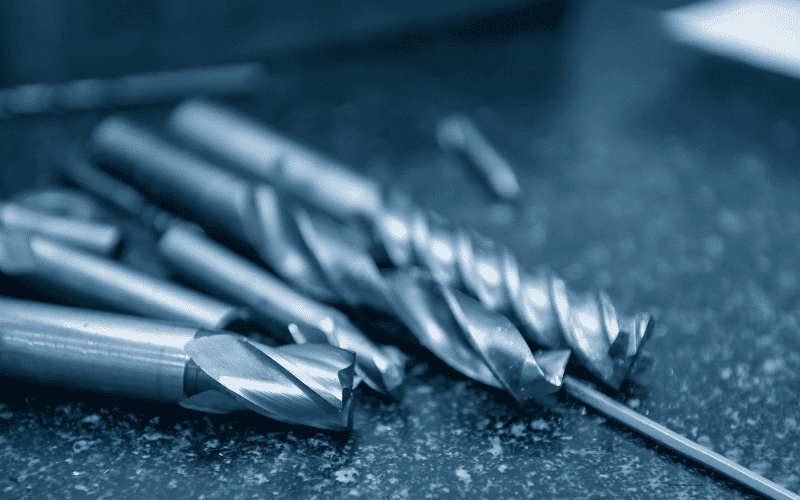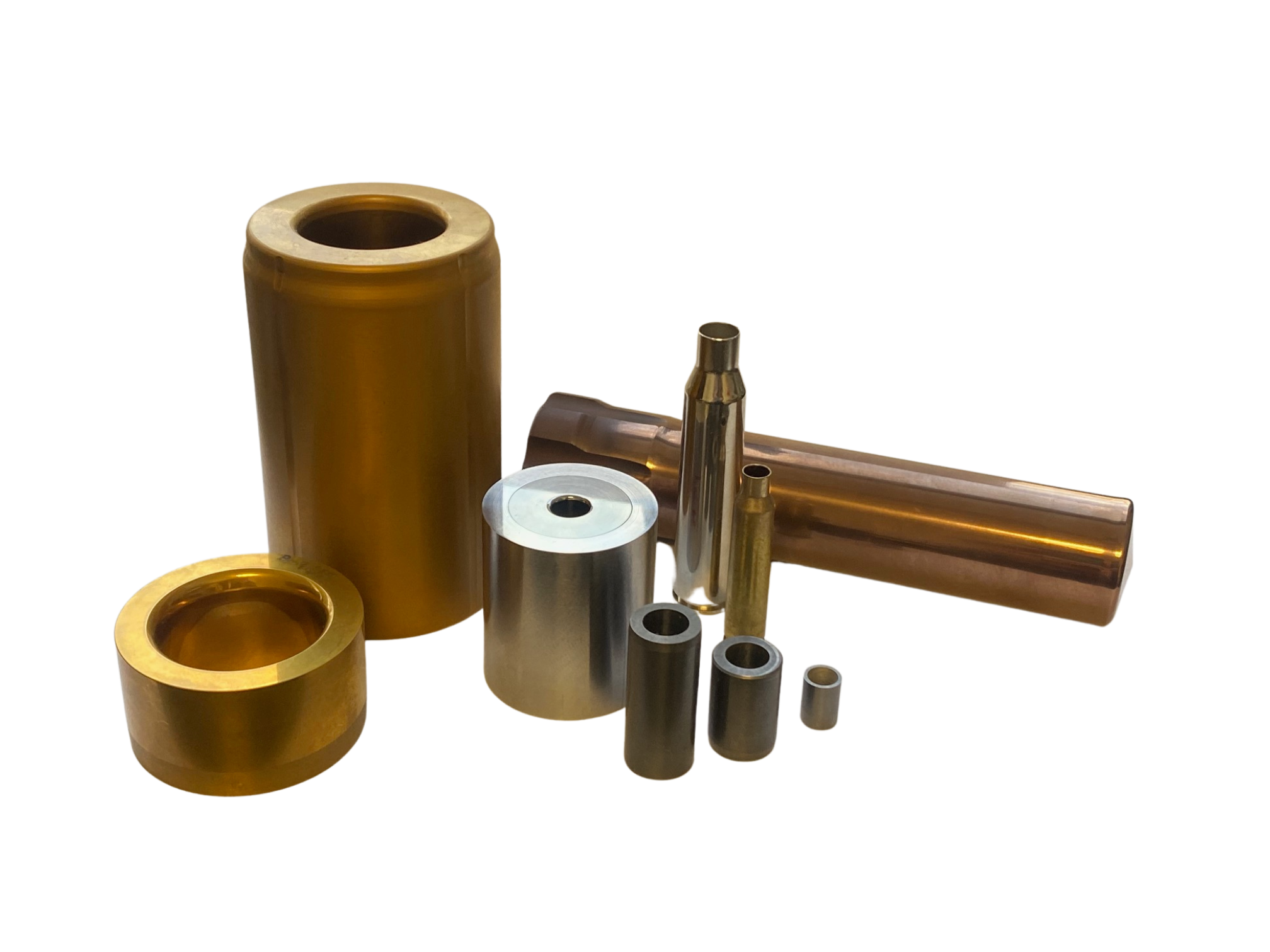
Solid carbide die cutting tools are essential in today’s manufacturing world, where speed, accuracy, and efficiency are key. These tools easily handle high-pressure environments, making them a smart investment for any operation aiming to reduce waste and increase output.
Unlike high-speed steel (HSS) or carbide-tipped options, solid carbide tools are made entirely from tungsten carbide, one of the hardest materials used in machining. That makes them incredibly tough, long-lasting, and reliable even under extreme conditions.
In this blog, we’ll explore how solid carbide cutting tools can improve production, reduce downtime, and save money in the long run. Whether you’re in the automotive, aerospace, or medical device industry, these tools could be a game-changer.
The Science Behind Solid Carbide’s Superiority
What is solid carbide, and why does it outperform other cutting materials?
It comes down to its unique composition and how it’s made. Unlike traditional tool steels or coated options, solid carbide tools are built to handle extreme heat, pressure, and wear, making them a top choice for demanding manufacturing jobs.
Let’s break down what makes them so effective.
The Composition
Solid carbide cutting tools are made from a tough blend of:
- Tungsten Carbide (WC): A hard, wear-resistant material that forms the tool’s cutting body
- Cobalt (Co): A metal binder that holds everything together and adds toughness
This engineered combo results in a material at least three times stiffer than steel. It maintains its cutting edge even when temperatures rise during high-speed machining.
Solid Carbide vs. Carbide-Tipped Tools
Many workshops use carbide-tipped tools (as the name indicates, only the cutting edge is made of carbide) because they’re cheaper upfront. However, solid carbide tools enjoy these key advantages:
| Feature | Solid Carbide Tools | Carbide-Tipped Tools |
| Material | The entire tool is made of carbide | Only the cutting edge is made of carbide |
| Tool Life | Longer-lasting | Wears out faster |
| Precision | Better stability | More deflection |
| Cost | Higher initial cost | Lower initial cost |
For high-volume or precision work, solid carbide’s full-body construction prevents edge breakdown and maintains accuracy far longer.
Key Performance Advantages
Other than its composition, the following properties explain why manufacturers rely on the superiority of carbide tooling:
Heat Resistance
One of the standout features of solid carbide is its ability to maintain hardness even at extreme temperatures, often exceeding 1,000°F. This means the tool won’t soften or degrade under the heat generated during rapid cutting. As a result, manufacturers can run machines at higher speeds without risking tool failure or compromising cut quality.
Wear Resistance
Solid carbide tools are known for their excellent wear resistance. They hold their edge far longer than high-speed steel (HSS) tools, often lasting five to ten times longer, depending on the material and application. This extended lifespan reduces how often tools need to be replaced, leading to fewer interruptions and more consistent production output.
Stiffness
Stiffness matters when you’re aiming for precision. Solid carbide tools offer exceptional rigidity, which helps minimize tool deflection and vibration during cutting. This leads to smoother finishes and better dimensional accuracy, which is crucial for parts with tight tolerances or intricate details. In industries like aerospace, automotive, and medical manufacturing, that level of precision can make all the difference.
Solid carbide’s science-backed design translates directly to faster production, fewer tool changes, and higher-quality finishes, making it a smart choice for modern manufacturing.
Different Ways Solid Carbide Tools Enhance Productivity
Manufacturers are always looking for ways to increase output, reduce downtime, and maintain quality. Solid carbide die cutting tools support all three by delivering reliable performance and long-term value.
Here are five ways solid carbide tools help improve productivity across different operations.
Faster Machining Speeds = More Parts Per Hour
Solid carbide tools can run at much higher speeds than traditional tool steels. Carbide holds its hardness even at high temperatures, which allows for faster RPMs and more aggressive feeds.
This translates to shorter cycle times. In CNC machining, switching to solid carbide often results in 15–25% faster operations. For example, one automotive manufacturer reduced milling time on aluminum housings from 22 minutes to 17 minutes per part.
Extended Tool Life = Less Machine Downtime
Solid carbide tools last significantly longer than HSS tools—often five to ten times longer. That durability means fewer tool changes and less time resetting machines during production runs.
While the initial cost is higher, the overall cost per part typically goes down. One turbine blade manufacturer extended tool life from 50 parts to 400 per tool, creating major gains in efficiency and consistency.
Superior Precision = Less Rework & Scrap
Thanks to their rigidity and minimal deflection, solid carbide tools offer excellent dimensional accuracy. They can maintain tighter tolerances and deliver cleaner surface finishes, often eliminating the need for secondary finishing steps.
This precision leads to less scrap and fewer reworks, especially when machining parts requiring exact specifications, such as aerospace or medical manufacturing components.
Material Versatility = Fewer Tool Changes
Solid carbide cutting tools perform well across a wide range of materials—aluminum, stainless steel, titanium, composites, and more. This versatility allows shops to tackle different jobs with fewer tooling adjustments.
That means faster transitions between materials, fewer delays, and a more efficient workflow overall.
Lower Cost Per Part = Higher Profit Margins
Although solid carbide tools have a higher upfront cost, they often generate savings through extended tool life, reduced scrap, and faster machining. These benefits add up to lower costs per part and improved machine utilization.
Over time, this contributes to stronger profit margins and a more cost-effective production process.
Industry-Specific Applications
While solid carbide cutting tools benefit nearly every manufacturing sector, some industries rely on them more heavily, especially when precision, speed, and durability are non-negotiable.
Automotive Manufacturing
In automotive production, solid carbide tools are used to machine engine components, transmission parts, and brake systems. These tools maintain tight tolerances (±0.005″ or better) across high-volume runs, ensuring consistency and part quality.
For example, machining aluminum cylinder heads with carbide end mills can cut cycle times by up to 30% compared to high-speed steel. In gear manufacturing, solid carbide’s heat resistance prevents premature wear when cutting hardened steel. With fewer tool changes, production lines stay running, which is critical when daily output targets exceed 10,000 parts.
Aerospace
Aerospace manufacturers rely on solid carbide cutting tools to machine challenging materials like titanium, Inconel, and carbon composites. These materials are tough on standard tools, but carbide’s rigidity and wear resistance make it ideal.
When milling thin-walled aircraft parts, carbide prevents deflection and maintains clean cuts. In turbine blade production, for instance, solid carbide tools last up to 5x longer than alternatives, ensuring each blade meets strict aerodynamic specs while reducing scrap and turnaround times.
Energy Sector
In the energy industry, solid carbide tools are essential for machining parts that must perform under intense pressure, heat, and corrosion. These tools are used to manufacture components for drilling systems, wind turbines, and even nuclear reactors.
Whether it’s large precision gears or intricate, high-tolerance parts, solid carbide’s strength and accuracy help maintain equipment reliability in critical applications. That level of consistency matters in environments where part failure is not an option.
Medical Device Manufacturing
Precision is everything in medical manufacturing. Solid carbide cutting tools are used to produce implants, surgical instruments, and dental parts with sub-millimeter accuracy.
These tools stay sharp through complex cuts, enabling the production of bone screws with fine threading, porous implant surfaces, and detailed features on microsurgical tools. Orthopedic manufacturers have reported up to a 40% drop in tool-related defects after switching to solid carbide for titanium components. Carbide’s stability also reduces burrs, which is essential for patient safety and regulatory compliance.
General Machining and Job Shops
Job shops that work with a wide range of materials and prototypes benefit from the versatility of solid carbide tools. A single set of carbide end mills can efficiently handle stainless steel fixtures, plastic injection molds, and copper electrodes for EDM.
This versatility helps reduce tool inventory, speed up changeovers, and lower overall production costs, especially for small and mid-sized shops managing mixed workloads.
From automotive to aerospace to medical, solid carbide cutting tools deliver the performance needed to stay competitive. Their unique combination of speed, precision, and durability makes them the go-to solution for manufacturers operating at the highest levels.
Best Practices to Maximize the Performance of Solid Carbide Cutting Tools
Getting the most from your carbide equipment requires more than just selecting the right tool for the job. Proper handling, operation, and maintenance significantly impact tool life and machining quality. Follow these expert-recommended practices to ensure your carbide tools deliver their full potential:
Optimize Cutting Parameters
The exceptional hardness of solid carbide tools allows for aggressive machining, but pushing them beyond recommended limits can lead to premature failure. Always:
- Match speeds and feeds to the specific material being cut
- Use manufacturer-recommended chip loads to prevent overheating
- Reduce feed rates when machining hard or abrasive materials
For example, running a 1/2″ carbide end mill at 300 SFM with a 0.003″ chip load typically provides optimal performance when milling stainless steel.
Implement Effective Coolant Strategies
While solid carbide cutting tools can handle higher temperatures than HSS, proper cooling still extends tool life significantly:
- Use flood coolant for most operations to control heat and remove chips
- Consider high-pressure coolant (up to 1,000 psi) for deep cavity machining
- Ensure proper coolant concentration (typically 5-10% for water-soluble coolants)
In titanium machining, effective coolant application can increase tool life by up to 50% compared to dry cutting.
Follow Proper Tool Handling Procedures
The brittle nature of carbide means careful handling of cutting tools prevents costly damage:
- Store tools separately in protective cases or foam-lined drawers
- Avoid dropping tools on hard surfaces
- Clean tool holders regularly to ensure proper clamping force
A study of tool failure modes found that nearly 15% of premature carbide tool failures stem from improper handling or storage.
Monitor Tool Wear and Performance
Regular inspection of your solid carbide tools prevents unexpected failures:
- Look for flank wear on cutting edges (0.010-0.015″ typically indicates replacement time)
- Check for chipping along cutting edges
- Listen for unusual noises that may indicate vibration or chatter
Many manufacturing facilities implement routine inspection schedules for their critical operations. They often conduct checks every four to eight hours of machine runtime to ensure optimal tool performance and prevent potential problems.
Ensure Proper Machine Maintenance
Even the highest-quality solid carbide cutting tools will not perform optimally if the machinery they are used with is not properly maintained:
- Check spindle runout regularly (should be under 0.0002″ for precision work)
- Maintain proper lubrication in guideways and ball screws
- Keep collets and tool holders in good condition
A well-maintained CNC machine can significantly improve the lifespan of carbide tools, with studies indicating a potential increase of 20-30% in tool life compared to using the same tools in equipment with worn components.
Adhering to best practices for solid carbide cutting tools provides substantial advantages for manufacturers, including consistent machining quality, fewer rejected parts, enhanced product reliability, extended tool life, reduced replacement costs, and ultimately, improved performance leading to heightened productivity and smoother business operations.
Maximize Productivity Through Solid Carbide Integration Today!
Solid carbide cutting tools represent a transformative solution for modern manufacturing. They deliver unparalleled productivity gains through their unique combination of speed, precision, and durability.
Across industries, these advanced tools consistently outperform conventional alternatives in achieving faster cycle times, superior surface finishes, and longer tool life. While the initial investment may be higher than traditional tooling, the long-term benefits make solid carbide tools a smart choice for competitive manufacturers.
Take the next step in optimizing your machining operations
Our team of carbide tooling specialists is here to help you select the perfect solutions tailored to your specific applications and production goals. Contact us for a no-obligation consultation today!



